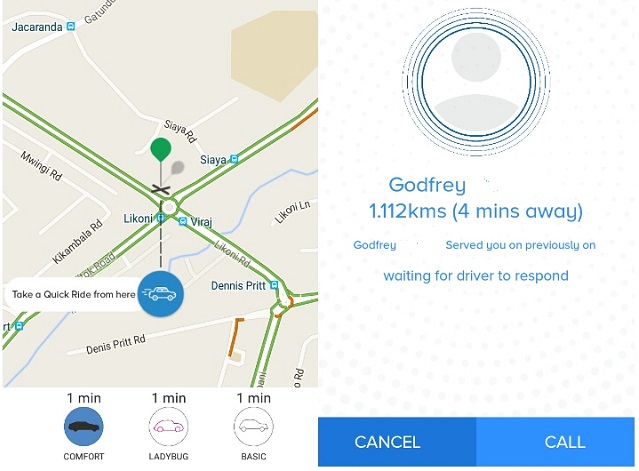Uber is the current market leader in the taxi hailing business in Kenya. It launched in January last year and despite a few challenges, it has gone from strength to strength. They announced in May that they’ve made 1 million trips in Kenya and in the process made quite a bit of money for themselves and their partners in Kenya.
Uber had faced competition from other taxi hailing services like Easy Taxi (now closing down), Mondo Ride, Maramoja among others. None has however been able to successfully compete with Uber. That might just be about to change.
Leading Kenyan telco Safaricom and software company Craft Silicon have partnered to launch a new taxi service in Kenya called Little Cab. The new service will be officially launched on July 5th but it is already operational. It is available via apps on Android, Windows and iOS and will apparently also be accessible via USSD.
Little Cab presents a real challenge to Uber and this is why I think that that’s the case.
1. Pricing
Little Cab is cheaper.
Uber costs Ksh. 100 (base fare), Ksh. 60 (per km) & Ksh. 4 per minute. The minimum fare is Ksh. 300.
Little Cab charges are as follows:
- Basic: Ksh. 50 per kilometre and Ksh. 4 per minute.
- Comfort and Lady Bug: Ksh. 55 per kilometre and Ksh. 4 per minute.
The minimum fare for the service is also slightly lower at Ksh. 270. The service also doesn’t have a base fare. It also have a live fare feature that allows customers to see their bill as the trip is progressing.
Little Cab also doesn’t have variations in their pricing. Surge pricing has been a major pain point for Uber customers and it’s a plus that Little Cab doesn’t have anything like that.
2. Share of revenue
Uber gets between 20% to 25% as a share of the revenue its partners generate. Little Cab will only ask for 15% of the revenue.
This will make Little Cab far more attractive for partners.
3. Women friendly
Little Cab has a lady bug option that has women drivers and that women clients can use 24 hours a day. The service is also available to men but only during the day (8am to 6pm).
This service is important as safety is a huge concern for women at night and some have been harassed in taxis. They will feel much safer with a woman driving them at night.
There will also be a basic and comfort option with the latter one being a bit expensive.
4. Payment
Little Cab will allow payments via cash, MPESA, debit cards, credit cards and bank transfer. It provides a wide choice of payment options. Additionally, if you pay in cash and the cabbie doesn’t have change, they will just add it to your account.
Uber has failed to include debit cards in its payment structure thereby locking out those who’d like to use them. They are important because Central Bank of Kenya (CBK) statistics show that they were about 10.8 million debit cards in Kenya by February 2016. While cash and MPESA payment options are convenient, it’s always important to have a reliable back up.
5. Little cab is made in & for Kenya
Little Cab has the advantage of being made in Kenya by a Kenyan company Craft Silicon, in partnership with a familiar name in Safaricom. This will make acceptance easier. It has also been developed in Kenya with this specific market in mind.
6. Others
- Little Cab taxis will offer free WiFi to customers.
- Little Cab drivers will access the app for free and will not incur any data costs.
- Customers will be able to choose the radio station they want to listen to.
- Customers can buy Safaricom, Orange & Airtel airtime from a little cab driver.
- Live traffic updates will help costumers navigate and even change the route real time in case there’s traffic along the route they were intending to use.


